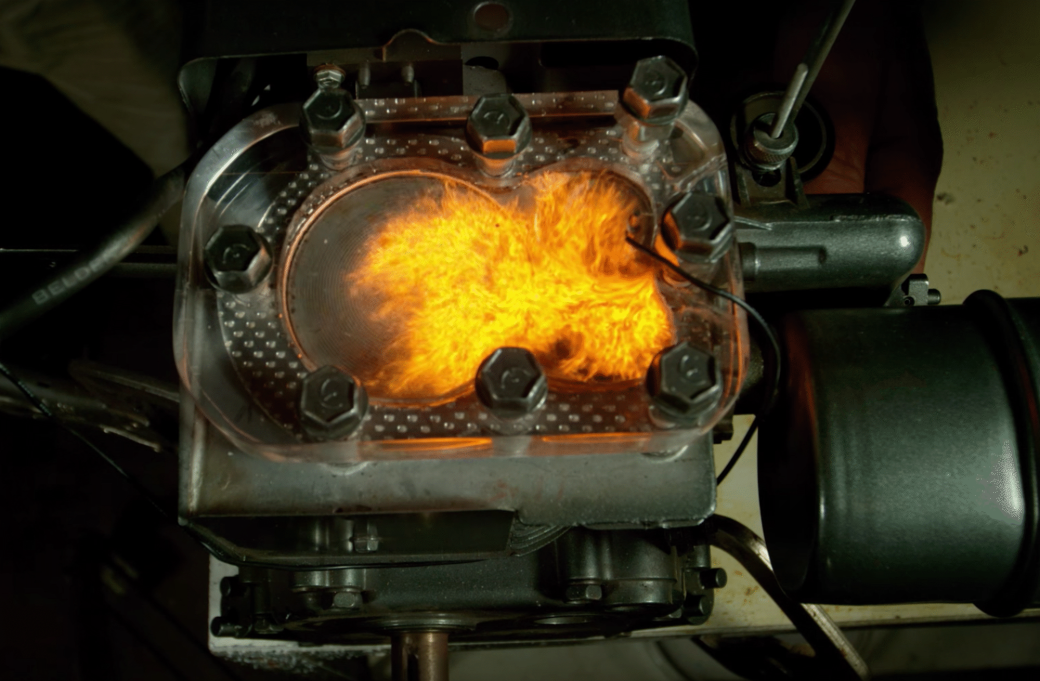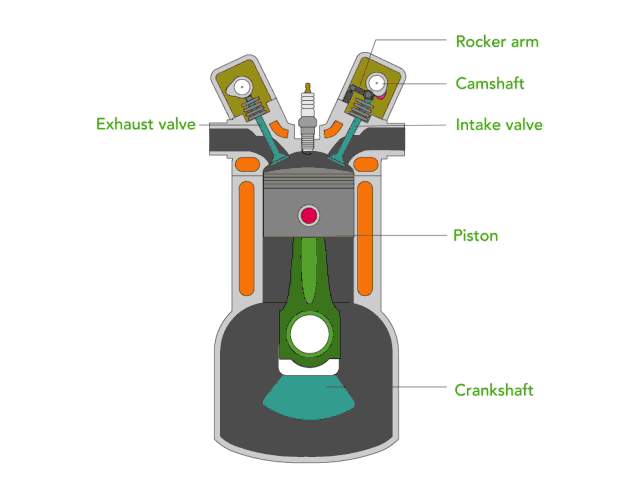Many of our GarageSpot readers know their way around an engine, but many don’t. For those that do and just want to see the cool video, here you go. For those that want a bit of education, keep reading.
How Internal Combustion Engines Work
Combustion is the basic chemical process of releasing energy from a fuel and air mixture. In an internal combustion engine, the ignition and combustion of the fuel occur within the engine itself. The engine then partially converts the energy from the combustion to work. The engine consists of a fixed cylinder and a moving piston. The expanding combustion gasses push the piston downward, which in turn rotates the crankshaft. Ultimately, through a system of gears in the powertrain, this motion drives the vehicle’s wheels.
There are two kinds of internal combustion engines: the spark-ignition gasoline engine and the compression-ignition diesel engine. Most of these are four-stroke cycle engines, meaning four piston strokes are needed to complete a cycle. The cycle includes four distinct processes: intake, compression, combustion and power stroke, and exhaust.
Spark-ignition gasoline and compression-ignition diesel engines differ in how they supply and ignite the fuel. In a spark-ignition engine, the fuel is mixed with air and then inducted into the cylinder during the intake process. After the piston compresses the fuel-air mixture, the spark ignites it, causing combustion. The expansion of the combustion gasses pushes the piston during the power stroke. In a diesel engine, only air is inducted into the engine and then compressed. Diesel engines then spray the fuel into the hot compressed air at a suitable, measured rate, causing it to ignite.
Here’s a good eight-minute tutorial on how an engine works, albeit based on Toyota engines:
* Some content was borrowed from a government website somewhere on a private server run by hackers… or something like that.








